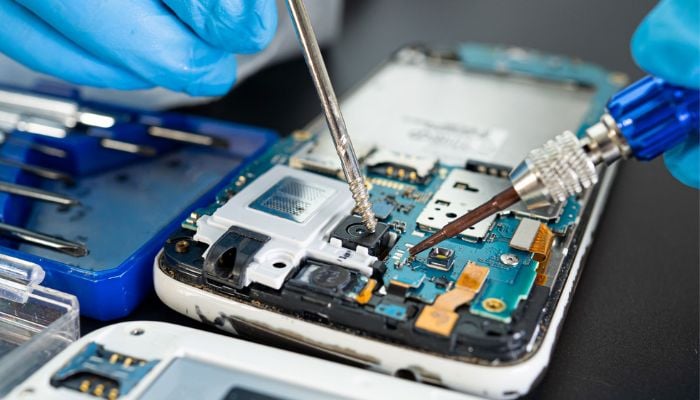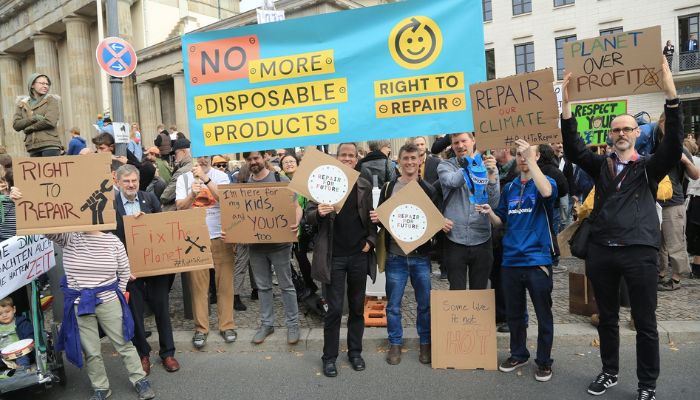EU Parliament to Consider Right to Repair Through 3D Printing

In an effort to address the enormous amount of annual waste produced in the European Union in the form of usable consumer goods, the Internal Market and Consumer Committee of the EU Parliament (IMCO) has been campaigning for the right to repair in the EU for over ten years. The high volume of waste generated to date has resulted in a significant negative environmental impact. Indeed, according to the European Commission, throwing away goods prematurely produces 35 million tons of waste and adds 261 million tons of CO2 every year. The situation is also a problem for consumers themselves, who incur an annual loss of 12 billion euros through the disposal of their products, which could be avoided through repairs.
Following an initial vote of 38 to 2 in the IMCO committee, the EU has now started the deliberation process to adopt a number of measures to make repair more palatable to consumers rather than buying new. Moreoever, one of the key factors for the flexible production of spare parts is additive manufacturing, which is a significant part of the committee’s argument for the viability and efficiency of adopting right-to-repair measures. The measures proposed by the IMCO serve to extend the life cycle of consumer products and contribute to environmental protection. The benefits brought about by repairing instead of replacing has been an oft-discussed topic which comes with its own series of requirements and responsibilities both from the producers and consumers who utilize these products.

Right to repair allows for longer device lifespans and less waste (photo credits: Euractiv)
In their most recent vote, the IMCO approved their position regarding the right to repair which outlines the stance which will be voted on in November. Their position includes details such as how retailers and producers are obliged to repair products free of charge within the statutory warranty period. On the other hand, repairs can be overlooked if a new product is cheaper than repair, or if the restoration of the item is inconvenient for the consumer. However, repairs are to be made more attractive to consumers through a variety of additional factors such as warranty extensions of repaired goods by one year or through vouchers. Companies would also pay for the repair of a certain amount of products that are not covered by any statutory warranty, including technical devices, for example. Companies may also lend goods to customers in order to provide a replacement service for the duration of the repairs.
The right to repair will also create a new environment of services around repair. Accordingly, repair shops, independent technicians and consumers will have access to the necessary spare parts at any time for the entire duration of the product life cycle without having to spend a fortune. Access which can be further enhanced by online platforms that provide information on repair conditions, options and locations. The EU parliamentarians hope that the right to repair will reduce repair costs, increase competition and provide more choice for customers. 3D printing is well-situated to serve as a means to facilitate repairs, as additive manufacturing allows for the replacement of a single broken part in a set without the need to replace everything, or the ability to make repairs directly on damaged surfaces as we have already seen done in the aerospace and rail industries, for example.
René Repasi (S&D, DE), committee member of the IMCO, also commented on the importance of the extent of the right to repair: “Today we established direct repair obligations for producers and introduce new incentives for consumers to choose repair. We strengthened the role of independent repairers and place them at the [center] of improving repair in Europe. Through better access to relevant technical repair information and affordable spare parts for repairers, including promoting 3D printing for parts, more competition will drive down repair costs. We coupled this with an obligation on member states to establish financial incentives to kick-start the repair sector.”

Photo credits: Kyle Wiens
The final version of the right to repair is still pending while MEPs will vote on the draft mandate at the upcoming plenary session in November and discuss the way forward. More information about the EU right to repair legislation can be found HERE.
What do you think of the EU considering legislation on the right to repair? Let us know in a comment below or on our LinkedIn, Facebook, and Twitter pages! Don’t forget to sign up for our free weekly Newsletter here, the latest 3D printing news straight to your inbox! You can also find all our videos on our YouTube channel.
*Cover Photo Credits: European Commission / PhoneArena







